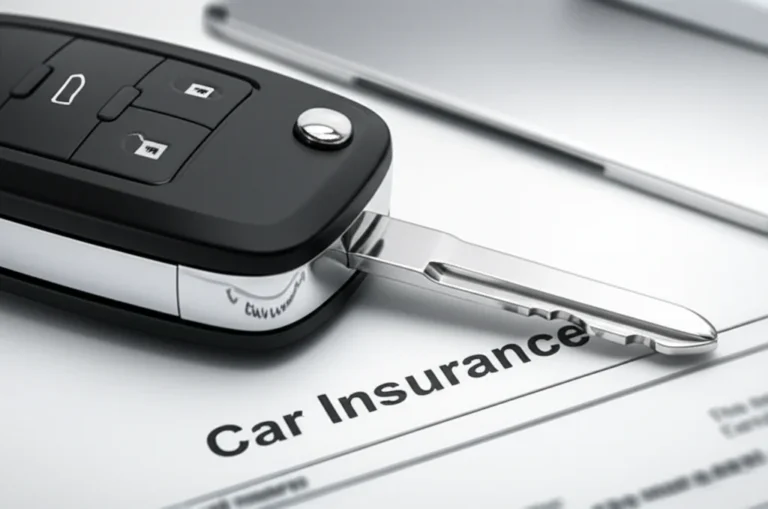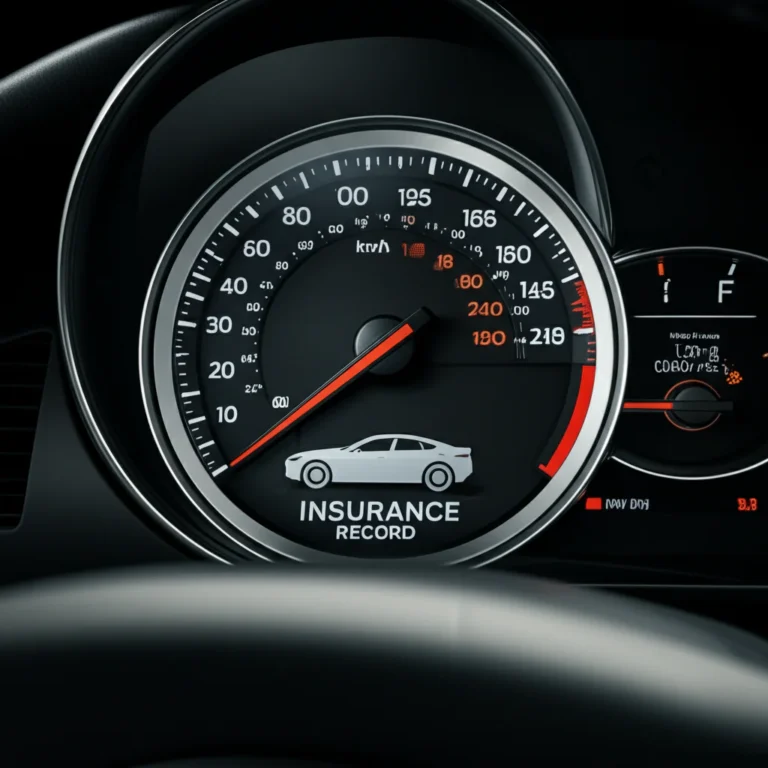Support our educational content for free when you purchase through links on our site. Learn more
Car Insurance for New Drivers: 12 Expert Hacks to Save Big (2025) 🚗
Getting car insurance as a new driver can feel like stepping into a maze with no map. You’re eager to hit the road but hit hard by sky-high premiums, confusing jargon, and endless fine print. Did you know that teen and new drivers pay up to three times more for insurance than experienced adults? That’s a hefty toll for simply being new behind the wheel! But don’t worry—we at Car Brands™ have cracked the code to help you navigate this tricky terrain with confidence and savings.
In this comprehensive guide, we’ll walk you through everything from why new drivers face steep insurance costs to savvy strategies that can slash your premiums. Whether you’re adding a teen to a family policy or setting up a solo plan, we’ll reveal insider tips like how telematics apps can reward your safe driving, why your car choice matters more than you think, and how parental involvement can actually save you money. Ready to turn that insurance headache into a smooth ride? Buckle up—we’ve got you covered!
Key Takeaways
- New drivers face higher insurance rates due to statistical risk, but these costs decrease with experience and a clean record.
- Adding a new driver to an existing family policy is usually the most affordable option.
- Choosing the right coverage—liability, collision, comprehensive, and uninsured motorist—is crucial for protection and peace of mind.
- Good student discounts, driver education courses, and telematics programs like GEICO DriveEasy can significantly reduce premiums.
- Vehicle choice and safety features play a major role in insurance costs; safer cars mean cheaper rates.
- Parental involvement, clear driving contracts, and defensive driving courses help reduce risk and insurance claims.
Table of Contents
- ⚡️ Quick Tips and Facts for New Driver Insurance
- 🛣️ The High Road Ahead: Why New Drivers Face Unique Insurance Challenges
- 💰 The Price Tag: How Much Does Car Insurance Cost for New Drivers?
- 👨 👩 👧 👦 Adding a New Driver to Your Existing Family Policy: The Smart Move?
- 🔑 Flying Solo: When and How to Get a New Driver Their Own Policy
- 🛡️ Choosing Your Armor: Essential Coverage Types for New Drivers
- 🔍 Navigating the Market: How to Shop for New Driver Car Insurance
- 💸 12 Savvy Strategies to Slash New Driver Insurance Costs
- Good Student Discounts: Brains Pay Off! 📚
- Driver Education Courses: Proving Your Prowess 🎓
- Telematics/Usage-Based Insurance: Drive Smart, Save Big 📱
- Higher Deductibles: A Calculated Risk for Lower Premiums?
- Bundling Policies: The Package Deal Advantage for Families
- Choosing the Right Vehicle: Safety First, Savings Second 🚗
- Multi-Car Discounts: More Cars, More Savings
- Low Mileage Discounts: For the Occasional Driver
- Advanced Safety Features: Tech That Saves You Money
- Parental Involvement: Co-Signing and Supervision for Young Drivers
- Shop Around, Always! Your Secret Weapon for Savings
- Maintain a Clean Driving Record: The Ultimate Discount
- 🛑 Beyond the Policy: Reducing Risks and Distracted Driving for New Drivers
- 🤝 The Parent-New Driver Partnership: Education and Expectations
- 🚦 Essential Safety Resources and Training for New Drivers
- 💥 When Things Go Wrong: Car Insurance and Accidents for New Drivers
- Conclusion: Driving Forward with Confidence
- Recommended Links: Your Go-To Resources
- FAQ: Your Burning Questions Answered
- Reference Links: Our Trusted Sources
Here is the body of the article, written as requested.
⚡️ Quick Tips and Facts for New Driver Insurance
Welcome to the wild world of car insurance! Getting behind the wheel for the first time is a massive milestone, but navigating the insurance landscape can feel like trying to merge onto a six-lane highway during rush hour. Don’t sweat it. We at Car Brands™ have your back. We’ve been there, done that, and paid the premiums. Here are some quick-fire tips and essential facts to get you started on your car insurance journey.
- ✅ Adding to a parent’s policy is usually cheaper. Insurers see a family unit as less risky than a solo teen. GEICO confirms that adding a teen to an existing policy is typically the more affordable route.
- ❌ Don’t just stick with your current provider without shopping around. Loyalty is great, but it might not save you money here. Get quotes from multiple companies.
- ✅ Good grades can mean big savings. Many insurers, including Liberty Mutual and GEICO, offer “Good Student Discounts” for maintaining a “B” average or higher. Time to hit the books!
- ❌ The car you drive isn’t just a style choice—it’s an insurance calculation. A sensible, safe sedan will be far cheaper to insure than a flashy sports car. Think Honda Civic, not Chevrolet Corvette.
- ✅ Driver’s ed and defensive driving courses can lower your rates. Insurers love to see that you’ve gone the extra mile to learn the rules of the road.
- ❌ State minimum coverage is rarely enough. It protects others, but it won’t cover damage to your own car if you’re at fault.
- ✅ Telematics programs are your friend. These usage-based insurance programs, like GEICO’s DriveEasy or Progressive’s Snapshot, use an app to monitor your driving habits and can reward safe driving with significant discounts.
🛣️ The High Road Ahead: Why New Drivers Face Unique Insurance Challenges
Let’s rip the Band-Aid off: insuring a new driver is expensive. It can feel personal, like the insurance world has it out for you. But trust us, it’s not you—it’s the statistics.
From an insurer’s perspective, new drivers are a big question mark. They lack a proven track record, and statistically, they’re more likely to be involved in accidents. The Centers for Disease Control and Prevention (CDC) notes that motor vehicle crashes are a leading cause of death for U.S. teens. Insurers price their policies based on risk, and unfortunately, youth and inexperience are a high-risk combination.
Think of it like this: you wouldn’t lend your prized guitar to a friend who’s never played a note, right? Insurers feel the same way about handing over a policy that could cost them tens of thousands of dollars. They need some reassurance that you’re going to be a responsible driver. The good news? This high-cost phase doesn’t last forever. As you build a history of safe, ticket-free driving, those rates will start to come down.
💰 The Price Tag: How Much Does Car Insurance Cost for New Drivers?
So, what’s the magic number? The frustrating but honest answer is: it depends. There’s no single price for new driver insurance because every driver, vehicle, and situation is unique. However, we can break down the key ingredients that go into this pricey recipe.
Factors Influencing New Driver Premiums
Your insurance premium is calculated using a complex algorithm with dozens of variables. Here are the heavy hitters:
| Factor | Why It Matters | Our Expert Take 🤓 |
|---|---|---|
| Age & Gender | Younger drivers (especially males) are statistically riskier. | It’s not personal, it’s actuarial. Rates typically start to decrease around age 25. |
| Location | Urban areas with more traffic and theft have higher rates than rural areas. | Your zip code is a bigger deal than you think. |
| Vehicle Type | The make, model, year, and safety ratings of the car. | A used Toyota Camry is an insurer’s dream. A new Ford Mustang is their nightmare. |
| Coverage Limits | The amount of protection you buy. Higher limits mean higher premiums. | Don’t skimp here. State minimums are often dangerously low. |
| Deductible Amount | The amount you pay out-of-pocket before insurance kicks in. | A higher deductible lowers your premium, but make sure you can afford it if you have to file a claim. |
| Driving Record | Any tickets or accidents on your record. | A clean record is your golden ticket to lower rates. |
| Annual Mileage | The more you drive, the higher the risk of an accident. | Be honest about your mileage, but if you’re a low-mileage driver, you could get a discount. |
Average Costs by Age and Location: What to Expect
While we can’t give you an exact price, you can generally expect the premium for a teen driver to add a significant amount to an existing family policy. A standalone policy for a new driver will be even more expensive. The key is to remember that these initial high costs are temporary. Think of it as paying your dues. Every year you drive without an accident or a ticket, you’re proving to insurers that you’re a safe bet, and your rates will reflect that.
👨 👩 👧 👦 Adding a New Driver to Your Existing Family Policy: The Smart Move?
For most families, this is the million-dollar question (or at least, the several-thousand-dollar question). Should you add your newly licensed speed-racer to your policy, or should they get their own?
In almost every scenario, adding them to your existing policy is the most cost-effective option. Here’s why:
- Bundling Benefits: You’re leveraging your own driving history and multi-policy discounts (like bundling auto and home insurance, which Liberty Mutual notes can save you over $950).
- Shared Risk: The insurer sees the teen as part of a larger, more established household, which dilutes the individual risk.
- Higher Liability Limits: Family policies often have higher liability limits, offering better financial protection for everyone if the new driver is in a serious accident.
When to Add a New Driver to Your Policy
This is a crucial point of confusion. Do you add them when they get their learner’s permit or their full license?
- Learner’s Permit: Most insurance companies automatically extend coverage to a driver with a learner’s permit at no extra cost, as long as they are driving with a licensed adult. However, you must notify your insurer. Don’t assume you’re covered. A quick phone call can save you a world of hurt.
- Full License: The moment that plastic card is in their hand, they must be officially added to your policy. There’s no grace period. If they drive off the DMV lot and get into an accident without being on the policy, your claim could be denied.
The Process: What You’ll Need to Add a Teen Driver
Adding a driver is usually a straightforward process. As Progressive suggests, you’ll need to have some information handy:
- Driver’s Full Name and Date of Birth
- Driver’s License Number
- Date They Were Licensed
- Any Driver’s Education or Good Student Certificates (for discounts!)
You can typically do this online, through your insurer’s mobile app, or by calling your agent. Be prepared for the sticker shock, but also be ready to ask about every possible discount.
🔑 Flying Solo: When and How to Get a New Driver Their Own Policy
While adding a new driver to a family plan is usually the go-to, there are situations where a separate policy might be necessary or even preferable.
Pros and Cons of Separate Policies for Young Drivers
| Pros ✅ | Cons ❌ |
|---|---|
| Financial Independence: The new driver takes responsibility for their own bills. | Significantly Higher Cost: This is almost always the most expensive option. |
| Protects Family Assets: If the new driver is in a major accident, a separate policy can shield the parents’ assets and insurance rates from a massive lawsuit or premium hike. | Lower Coverage Limits: To make it affordable, many standalone policies for new drivers have lower, riskier coverage limits. |
| Clear Ownership: This is often required if the new driver owns their own vehicle and no longer lives at home. | Loss of Multi-Car/Bundling Discounts: You miss out on some of the easiest ways to save money. |
A separate policy usually makes sense when the young driver has moved out, owns their own car, and is financially independent. Until then, the family plan is likely your best bet.
Steps to Securing an Independent Policy for Your First-Time Driver
If you’ve decided a solo policy is the way to go, the process is similar to buying any other policy, just with a higher price tag.
- Budget for Coverage: Determine what you can realistically afford, but don’t just opt for the state minimum.
- Gather Your Info: You’ll need your driver’s license, Social Security number, and the Vehicle Identification Number (VIN) of the car you’ll be insuring.
- 👉 Shop ‘Til You Drop: This is non-negotiable. Get quotes from at least five different insurers. Use online comparison tools and speak to independent agents.
- Ask About Discounts: Even on a solo policy, you might qualify for discounts for things like paperless billing, paying in full, or having certain safety features on your car.
🛡️ Choosing Your Armor: Essential Coverage Types for New Drivers
Alright, let’s talk about what you’re actually buying. Car insurance can seem like a foreign language, full of jargon like “bodily injury liability” and “comprehensive.” But think of it as choosing the armor for your car and your finances. You don’t want to go into battle with a flimsy shield, do you?
As the excellent breakdown in the featured video on this page explains, coverage generally falls into three buckets: coverage for others, coverage for you, and coverage for your car.
Liability Coverage: The Bare Minimum for New Drivers
This is the one part of car insurance that is required by law in nearly every state. It covers damages you cause to other people and their property. It does not cover you or your car.
- Bodily Injury Liability (BI): Pays for the medical bills, lost wages, and pain and suffering of people you injure in an at-fault accident. It’s typically shown as two numbers, like 25/50. This would mean the policy pays up to $25,000 per person injured, up to a maximum of $50,000 per accident.
- Property Damage Liability (PD): Pays to repair or replace the other person’s car, or any other property you damage (like a fence or a mailbox).
Our Expert Advice: The state minimum liability limits are dangerously low. A new car can easily cost more than $25,000, and a serious injury can exceed $50,000 in medical bills in a heartbeat. We recommend carrying limits of at least 100/300/100 if you can afford it.
Collision and Comprehensive: Protecting Your Ride and Investment
These two are often bundled together and referred to as “full coverage.” This is the part of the policy that pays to fix your car.
- Collision Coverage: This covers damage to your car from, well, a collision! It doesn’t matter if you hit another car, a tree, or a guardrail; if you’re at fault, this is the coverage that pays for repairs (after you pay your deductible).
- Comprehensive Coverage: This covers damage to your car from almost everything else. Think of it as “Acts of God and Animals.” This includes theft, vandalism, fire, hail, flooding, or hitting a deer.
Our Expert Advice: If you have a loan or lease on your car, your lender will require you to have both. If you own an older, less valuable car outright, you might consider dropping these coverages to save money. As GEICO suggests, if the premium outweighs the actual cash value of the car, it might not be worth it.
Uninsured/Underinsured Motorist: The Safety Net You Hope You Never Need
What happens if someone hits you and they don’t have insurance, or they don’t have enough insurance? That’s where this crucial coverage comes in.
- Uninsured Motorist (UM): Pays for your medical bills and sometimes car repairs if you’re hit by a driver with no insurance.
- Underinsured Motorist (UIM): Pays the difference if you’re hit by a driver whose liability limits aren’t high enough to cover your bills.
Our Expert Advice: According to the Insurance Research Council, about 1 in 8 drivers is uninsured. This coverage is relatively inexpensive and absolutely essential. Get it.
Medical Payments/Personal Injury Protection (PIP): For Your Well-being
This coverage helps pay for medical expenses for you and your passengers after an accident, regardless of who is at fault.
- Medical Payments (MedPay): Covers health insurance deductibles, co-pays, and other medical costs.
- Personal Injury Protection (PIP): Available in “no-fault” states, PIP is more comprehensive and can also cover lost wages and other non-medical costs.
🔍 Navigating the Market: How to Shop for New Driver Car Insurance
Shopping for car insurance is a bit like dating. You need to know what you’re looking for, put yourself out there, and not just settle for the first one that comes along. Finding the right policy at the right price takes a little effort, but it’s worth it.
Gathering Information: What Insurers Need to Know
Before you can get an accurate quote, you’ll need to have your ducks in a row. Progressive lays out a clear list of what you’ll need:
- Personal Details: Driver’s license number, date of birth, address, and driving history for all drivers on the policy.
- Vehicle Details: The make, model, year, and Vehicle Identification Number (VIN) for all cars.
- Current Policy Info (if you have one): It helps to have your current declaration page handy to compare coverages apples-to-apples.
Getting Multiple Quotes: Our Top Picks for New Driver Insurance
We can’t stress this enough: compare, compare, compare. Get quotes from national giants, regional players, and even smaller local companies.
Here are a few companies known for being competitive for new and teen drivers:
- GEICO: Often praised for competitive rates and a user-friendly online experience. Their DriveEasy program is a great way for safe new drivers to earn discounts.
- Progressive: A great option for comparing rates with their online tool. Their Snapshot telematics program is another popular choice for usage-based savings.
- State Farm: Known for its extensive network of local agents who can provide personalized service and help you find every last discount.
- Liberty Mutual: Offers specific discounts for teens, like their Teen Driving Program discount, making them a strong contender.
👉 Shop Insurance on:
- Progressive: Official Website
- GEICO: Official Website
- Liberty Mutual: Official Website
Understanding the Fine Print: Decoding Your Policy
Once you get your quotes, don’t just look at the price. Look at the declaration page. This is the summary of your policy. Make sure the coverages, limits, and deductibles are identical across all quotes to ensure you’re making a fair comparison. Pay attention to any exclusions or special conditions. If you don’t understand something, ask!
💸 12 Savvy Strategies to Slash New Driver Insurance Costs
Okay, you’re braced for the high cost, but you don’t have to accept it without a fight! There are plenty of ways to bring that premium down. Here are our team’s top 12 strategies to save money.
1. Good Student Discounts: Brains Pay Off! 📚
This is one of the easiest and most significant discounts available. Most major insurers, including GEICO and Liberty Mutual, offer a discount (often up to 15-25%) for full-time high school or college students who maintain a “B” average (3.0 GPA) or better.
2. Driver Education Courses: Proving Your Prowess 🎓
Completing an accredited driver’s education course shows the insurer that you’re serious about safety. Many companies, like Liberty Mutual, offer a “Teen Driving Program Discount” for completing a qualified program.
3. Telematics/Usage-Based Insurance: Drive Smart, Save Big 📱
This is a game-changer. Programs like GEICO’s DriveEasy and Progressive’s Snapshot use a smartphone app to monitor your actual driving habits—things like hard braking, rapid acceleration, and phone use. Good driving can lead to substantial discounts. GEICO even notes that 75% of the 260,000 teen drivers enrolled in DriveEasy received a discount at renewal.
4. Higher Deductibles: A Calculated Risk for Lower Premiums?
Your deductible is what you pay out-of-pocket on a comprehensive or collision claim. Raising your deductible from, say, $500 to $1,000 can lower your premium. The catch? You have to be able to afford that $1,000 if something happens.
5. Bundling Policies: The Package Deal Advantage for Families
If your parents have homeowners or renters insurance, bundling it with your auto policy can unlock serious savings. Liberty Mutual claims you can save over $950 by bundling auto and home. This is a must-ask-for discount.
6. Choosing the Right Vehicle: Safety First, Savings Second 🚗
The car a new driver uses has a massive impact on insurance rates. A reliable sedan or small SUV with top safety ratings (check the IIHS Top Safety Picks) will be much cheaper to insure than a sports car or a huge truck. Check out our Car Brand Comparisons to find a safe and affordable ride.
7. Multi-Car Discounts: More Cars, More Savings
If your family has more than one vehicle insured with the same company, you’re likely already getting this discount. Adding the new driver’s car to the policy will extend this savings.
8. Low Mileage Discounts: For the Occasional Driver
If the new driver is a student away at college without a car (more than 100 miles from home) or simply doesn’t drive much, let your insurer know. You could qualify for a significant discount.
9. Advanced Safety Features: Tech That Saves You Money
Modern cars are packed with safety tech like automatic emergency braking, blind-spot monitoring, and lane-keeping assist. These features can prevent accidents, and insurers often reward you with lower premiums for having them.
10. Parental Involvement: Co-Signing and Supervision for Young Drivers
Simply being on a parent’s policy is a form of co-signing. But active parental involvement—setting rules, using monitoring apps, and leading by example—creates safer drivers, which leads to fewer claims and lower long-term costs.
11. Shop Around, Always! Your Secret Weapon for Savings
We’ve said it before, and we’ll say it again. Rates for the exact same driver and car can vary by hundreds or even thousands of dollars between companies. Get quotes every year or two to make sure you’re still getting the best deal.
12. Maintain a Clean Driving Record: The Ultimate Discount
This is the big one. Avoiding accidents and traffic tickets is the single most effective way to lower your car insurance rates over time. It’s the long game, but it has the biggest payoff.
🛑 Beyond the Policy: Reducing Risks and Distracted Driving for New Drivers
A great insurance policy is a safety net, but the real goal is to never have to use it. For new drivers, the biggest threat on the road isn’t a mechanical failure or a sudden storm—it’s distraction.
The Dangers of Distraction: Why Every Second Counts
According to the National Highway Traffic Safety Administration (NHTSA), sending or reading a text takes your eyes off the road for 5 seconds. At 55 mph, that’s like driving the length of an entire football field with your eyes closed. It’s terrifying.
Distractions aren’t just phones. They can be:
- Changing the music or GPS
- Eating or drinking
- Talking to passengers
- Reaching for something in the car
Parental Controls and Monitoring Apps: Tech for Peace of Mind
While telematics apps from insurers monitor driving for discounts, other apps are designed specifically for parental peace of mind. Services like Life360 or FamiSafe can track location, monitor speed, and even report on phone usage while driving. They can be a great tool for coaching a new driver during their first few months on the road.
Setting Clear Rules and Consequences: The Family Driving Contract
Before you hand over the keys, sit down and create a parent-teen driving agreement. This isn’t about a lack of trust; it’s about setting clear, life-saving expectations. GEICO provides excellent resources, including a parent-teen contract, on their website. Your contract should cover:
- The No-Phone Rule: Absolutely no handheld phone use.
- Passenger Limits: The risk of a fatal crash increases with each teen passenger.
- Curfews: Limit driving during high-risk late-night hours.
- Seatbelt Mandate: Everyone buckles up, every time. No exceptions.
- Zero Tolerance: A strict rule against driving under the influence of alcohol or drugs.
🤝 The Parent-New Driver Partnership: Education and Expectations
Getting a driver’s license isn’t the finish line; it’s the starting line. The learning process continues long after the driving test is over, and it requires a strong partnership between parents and the new driver.
Open Communication is Key: Talking About Driving Responsibilities
Talk openly and often about the responsibilities that come with driving. This isn’t just about the car; it’s about the financial responsibility of insurance, fuel, and maintenance. When new drivers understand the costs involved, they’re more likely to appreciate the privilege of driving.
Understanding State Laws: Graduated Driver Licensing (GDL) Explained
Nearly all states have a Graduated Driver Licensing (GDL) system designed to ease new drivers into the driving experience. These laws typically include three stages:
- Learner’s Permit: Supervised driving only.
- Intermediate/Provisional License: Unsupervised driving is allowed, but with restrictions (like curfews or passenger limits).
- Full License: All restrictions are lifted.
Familiarize yourself with your state’s specific GDL laws. They are not mere suggestions; they are the law, and violating them can delay getting a full license and cause insurance headaches.
Leading by Example: Be the Driver You Want Them to Be
This might be the most important tip of all. Your new driver has been watching you drive for 16 years. If you text at red lights, speed, or display road rage, you can’t be surprised when they do the same. Model the safe, patient, and attentive driving behavior you expect from them. Your actions speak louder than any lecture ever will.
🚦 Essential Safety Resources and Training for New Drivers
Beyond the basic driver’s ed class, there are numerous resources available to help new drivers build their skills and confidence.
Defensive Driving Courses: Beyond the Basics
These courses teach advanced skills that aren’t covered in standard driver’s ed, like skid control, emergency braking, and advanced hazard recognition. Completing one not only makes for a safer driver but can also earn you an insurance discount. Check out programs like B.R.A.K.E.S. or local courses offered by driving schools.
Online Safety Portals: Trusted Information at Your Fingertips
Don’t rely on hearsay. Get your information from trusted sources that are dedicated to vehicle and driver safety.
- Insurance Institute for Highway Safety (IIHS): www.iihs.org – The gold standard for vehicle safety ratings and research on teen driving.
- National Highway Traffic Safety Administration (NHTSA): www.nhtsa.gov – A government agency with a wealth of information on safe driving practices and vehicle recalls.
- TeenDriverSource.org: A fantastic resource from the Children’s Hospital of Philadelphia with research, events, and tools for parents and teens.
Vehicle Safety Features Explained: What to Look For
When choosing a car for a new driver, look for key safety features. Modern technology can provide an incredible safety net.
- Electronic Stability Control (ESC): A life-saving feature that helps prevent rollovers and skids. Mandatory on all new cars since 2012.
- Forward Collision Warning (FCW) & Automatic Emergency Braking (AEB): Systems that alert you to a potential crash and can even apply the brakes for you.
- Blind Spot Warning (BSW): Alerts you if there’s a vehicle in your blind spot when you try to change lanes.
💥 When Things Go Wrong: Car Insurance and Accidents for New Drivers
No matter how safe you are, accidents can happen. Knowing what to do in the immediate aftermath—and what to expect from your insurance company—can make a stressful situation much more manageable.
Reporting an Accident: The First Steps and What to Expect
- Stay Calm and Ensure Safety: Pull over to a safe location if possible and turn on your hazard lights. Check for injuries.
- Call 911: Report the accident and any injuries to the police. A police report is crucial for an insurance claim.
- Exchange Information: Get the other driver’s name, address, phone number, and insurance information. Do not admit fault.
- Document Everything: Take photos of the scene, the damage to both vehicles, and the other driver’s license plate and insurance card.
- Contact Your Insurer: Call your insurance company as soon as possible to start the claims process. Most insurers, like Liberty Mutual, have 24/7 claims hotlines and mobile apps to make this easier.
How Accidents Impact Premiums: The Ripple Effect
An at-fault accident will almost certainly cause your insurance premium to increase at your next renewal. The amount of the increase depends on the severity of the accident and your insurer’s policies. This surcharge can stay on your policy for three to five years. This is why a clean driving record is so valuable!
Understanding Your Policy’s Accident Forgiveness: A Lifeline?
Some insurance companies offer “accident forgiveness” as an optional add-on to a policy. This feature prevents your rates from going up after your first at-fault accident. It can be a valuable feature, especially for a policy with a new driver, but it does add to the premium. You’ll have to weigh the cost against the potential benefit.
Conclusion: Driving Forward with Confidence
Navigating the maze of car insurance for new drivers can feel like trying to find your way through a foggy mountain pass—uncertain and a bit nerve-wracking. But with the right knowledge, tools, and a dash of savvy, you can turn that fog into clear skies.
Adding a new driver to your existing family policy is usually the smartest, most cost-effective move, especially when combined with discounts like good student status or driver education completion. If independence calls for a separate policy, be prepared for higher premiums but also the benefit of financial separation.
Remember, the type of coverage you choose matters—liability is mandatory, but comprehensive and collision coverage protect your investment, while uninsured motorist and medical payments coverage safeguard your well-being.
Programs like GEICO’s DriveEasy and Progressive’s Snapshot show how technology can reward safe driving habits, turning your smartphone into a money-saving ally. And don’t forget: the best way to lower your insurance costs long-term is to stay accident- and ticket-free.
We hope our deep dive has answered your burning questions and given you the confidence to shop smart, drive safe, and save big. Your journey as a new driver is just beginning, and with the right insurance armor, you’re ready to take on the road ahead.
Recommended Links: Your Go-To Resources for New Driver Insurance
- 👉 Shop GEICO Car Insurance: GEICO Official Website
- 👉 Shop Progressive Car Insurance: Progressive Official Website
- 👉 Shop Liberty Mutual Car Insurance: Liberty Mutual Official Website
- Explore Safe and Affordable Cars:
- Find Defensive Driving Courses: National Safety Council Defensive Driving
FAQ: Your Burning Questions Answered
What is the average cost of car insurance for new drivers?
The average cost varies widely depending on factors like age, location, vehicle type, and coverage levels. Generally, adding a new teen driver to a family policy can increase premiums by several hundred to a few thousand dollars annually. Standalone policies for new drivers tend to be significantly more expensive due to the higher risk profile. According to the Insurance Information Institute, teen drivers can pay up to three times more than adult drivers. Remember, these costs typically decrease as the driver gains experience and maintains a clean record.
How can new drivers get cheaper car insurance rates?
New drivers can lower their premiums by:
- Being added to a family policy rather than buying their own.
- Maintaining good grades to qualify for “Good Student Discounts.”
- Completing accredited driver education or defensive driving courses.
- Participating in telematics or usage-based insurance programs like GEICO DriveEasy.
- Choosing a vehicle with high safety ratings and low repair costs.
- Increasing deductibles if financially feasible.
- Bundling auto insurance with other policies like homeowners or renters insurance.
- Driving fewer miles annually.
- Maintaining a clean driving record free of accidents and tickets.
What factors affect car insurance premiums for new drivers?
Premiums are influenced by:
- Age and gender: Younger drivers and males typically face higher rates.
- Location: Urban areas with more traffic and theft have higher premiums.
- Vehicle type: Cars with high safety ratings and lower repair costs cost less to insure.
- Coverage limits and deductibles: Higher limits and lower deductibles increase premiums.
- Driving history: Accidents and tickets raise rates.
- Annual mileage: More miles driven equals higher risk.
- Credit score: In many states, insurers use credit-based insurance scores to set rates.
Are there specific car insurance policies designed for new drivers?
Yes. Many insurers offer tailored policies or programs for new and teen drivers. For example, Liberty Mutual provides a Teen Driving Program discount, and GEICO offers the DriveEasy telematics program that rewards safe driving. These policies often include educational resources, discounts for driver education, and flexible coverage options to balance protection and affordability.
How does having a clean driving record impact insurance for new drivers?
A clean record is the single most effective way to reduce premiums over time. Insurers reward safe driving by lowering rates at renewal. Conversely, accidents or traffic violations can cause significant premium increases that last for years. Maintaining a spotless record demonstrates responsibility and reduces the perceived risk for insurers.
What are the best cars for new drivers to insure?
The best cars for new drivers are those with:
- High safety ratings (look for IIHS Top Safety Picks).
- Moderate engine power (avoid sports cars).
- Low repair and replacement costs.
- Good fuel efficiency.
Examples include the Honda Civic, Toyota Corolla, and Mazda3. These vehicles tend to have lower insurance premiums due to their safety features and lower likelihood of theft or expensive repairs.
Can new drivers get discounts on car insurance?
Absolutely! Common discounts include:
- Good Student Discount: For maintaining a “B” average or better.
- Driver Education Discount: For completing approved driver’s ed courses.
- Multi-Policy Discount: Bundling auto with home or renters insurance.
- Multi-Car Discount: Insuring more than one vehicle.
- Safe Driving Discounts: Through telematics programs or defensive driving courses.
- Low Mileage Discount: For driving fewer miles annually.
- Vehicle Safety Feature Discounts: For cars equipped with airbags, anti-lock brakes, and advanced driver-assist systems.
Reference Links: Our Trusted Sources
- GEICO Teen Driver Insurance & DriveEasy Program
- Progressive New Driver Car Insurance Guide
- Liberty Mutual Car Insurance for Teens
- Insurance Information Institute: Teen Drivers
- National Highway Traffic Safety Administration (NHTSA) Distracted Driving
- Insurance Institute for Highway Safety (IIHS) Vehicle Safety Ratings
- Centers for Disease Control and Prevention (CDC) Teen Driver Safety
- National Safety Council Defensive Driving Courses
For more expert insights on car insurance and driving safety, visit our Car Insurance category.
Ready to hit the road with confidence? Your perfect insurance policy is just a few clicks away!





